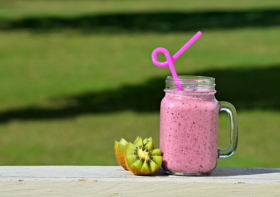Intravenous Vitamin C Cancer Treatment Works but FDA wants it banned
We all know Vitamin C has strong antioxidant function and can protect cell structures and DNA from free radical damage. Comparing to other prescription drugs, Vitamin C Cancer Treatment is remarkably safe even in enormously high doses, especially with Water-Soluble Vitamin C.
History of Vitamin C Cancer Treatment
Interest in using very high doses of vitamin C as a cancer treatment began as long ago as the 1970s when it was discovered that some properties of the vitamin may make it toxic to cancer cells. Be that as it may, the concept that mega-doses of vitamin C can cure cancer has been around for decades now, ever since two-time Nobel Laureate Linus Pauling first proposed it.
It began in 1972, when Ewan Cameron hypothesized that ascorbate could have anti-cancer action by inhibiting hyaluronidase and thereby preventing cancer spread after Pauling had first proposed that taking 1,000 mg of vitamin C daily can reduce the incidence of colds by 45% for most people. It wasn’t long before the two teamed up, and in 1976 Pauling and Dr. Ewan Cameron reported that a majority of 100 terminal cancer patients treated with 10,000 mg of vitamin C per day survived three to four times longer than patients who were not so treated.




The benefits of long-term vitamin C consumption in excess of the U.S. government recommended daily allowance (RDA) are widely acknowledged and include reduced risks of cancer, cardiovascular disease and cataracts.
Higher-than-RDA vitamin C intakes have also been associated with increases in good HDL cholesterol, decreases in LDL cholesterol oxidation, decreased blood pressure and decreased cardiovascular mortality.
Outcomes and Dosage Of Vitamin C Cancer Treatment
How much vitamin C is an effective therapeutic dose? Dr. Pauling and Dr. Ewan Cameron administered with 10,000 mg per day. While another Dr Klenner, M.D who is the first physician to aggressively use vitamin C to treat disease even before Dr Pauling back in 1940s administered up to 300,000 mg per day. That is very very high dosage. Dr. Klenner emphasized that small amounts did not work.
The dosage and route of administration of vitamin C is essential to determine if it has a direct anti-tumor action or a supportive, antioxidant function. The levels needed to achieve good effects are at least 200-1000 micromol/L. To achieve these higher anti-cancer levels, IV doses of 25-50 grams are required. 50 grams of IV vitamin C can achieve a plasma level of over 14,000 micromol/L. Oral supplementation is insufficient due to very limited absorption in the digestive tract.
Plasma vitamin C levels Is the Key
Plasma vitamin C levels peak after 200 mg of oral supplementation, and maximal oral dosing before loose stools occur is around 4 grams. Oral absorption can be increased if doses are split up during the day, taken with a meal, or in a sustained released formula. Even when using the same 10 gram dose, intravenous administration achieved a 50-150 fold greater plasma vitamin C level compared to oral supplementation.
However the downside of IV administration is Vitamin C levels peak in 30 minutes and then return back to normal within 24 hours. That means the treatment is only effective for a short period. In order to achieve constant long term effect, frequent treatments are needed.
Most integrative oncologists recommend IV treatments once or twice a week, with oral supplementation on all the other days, for at least 12 months, with regular lab testing to assess tumor markers and progression.
Number of review papers and case studies by integrative cancer physicians and researchers have reported improved cancer survival times and quality of life, and even tumor regression in some cases, after weekly IV vitamin C treatments done consistently over 12 months or longer.
It is also important to note that vitamin C therapy may not work for everyone and for every type of cancer. It is always recommended to consult your doctor to see if vitamin C therapy is right for you.
FDA Wants IV Vitamin C Banned
Even with the fact that vitamin C is such a powerful healing substance that is great for a lot of health conditions. The FDA is reported to be prohibiting small pharmacies from manufacturing or distributing inject-able VC.
Not only is the FDA seeking to eradicate use of IV vitamin C, but they are also working to ban inject-able magnesium chloride and inject-able vitamin B complex 100 as well. These substances are used to make what is called ‘Myers Cocktail‘, which is used for conditions like chronic fatigue syndrome, hepatitis, AIDS, mononucleosis, and influenza.
A sure sign of a powerful therapeutic agent is when the FDA tries tot shut it down.
Not to my surprise, their reasoning has nothing to do with safety. Because vitamin C has continually proven to be one of the least toxic nutrients in foods and liquid forms have a safe history of use. Instead, the reason is because it can’t be patented, and can’t be taken through the FDA’s approval process for a “new drug.”
While oral doses can correct deficiencies and maintain antioxidant levels within the body, IV infusions are required to reach pro-oxidant, anti-cancer plasma levels. To harness maximum benefit, both oral and IV treatments are needed to take advantage of the wide range of anti-cancer effects. While more studies are needed, there is a large body of evidence proving that it is a effective vitamin that can play a major role in an integrative cancer treatment plan.



Leave a Reply